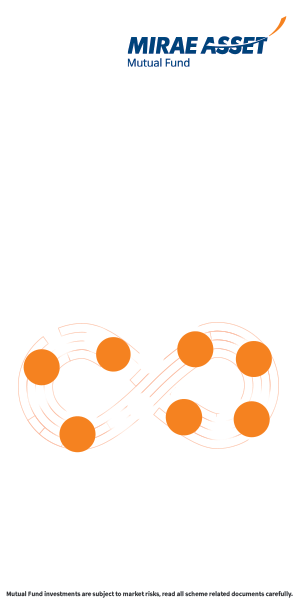Importance of Free Cash Flows in Equity Investing

If you follow the stock market during the earnings season, you will see that the headline numbers are usually the revenue and earnings (EPS) growth. In our post, Importance of EPS in Equity Investing, we had discussed that, the quality of EPS is more important than the EPS number itself.
Investors should understand that, EPS is an accounting concept and may not be the true indicator of the economic value added to the shareholders by the company. A management professor once told me that, for a company, cash is like what blood is for the human body. Businesses, whether small or large, need cash to survive and grow. If a company is not generating enough cash, it will struggle to grow. Free cash flow is one of the most important indicators, fund managers use, to evaluate the true performance of a public company. Unlike EPS, Free cash flow represents real cash.
What is Free Cash Flow (FCF) to Firm?
Free cash flow is the cash the firm is left with after paying all its expenses and investing in its growth. You can calculate the free cash flow of a firm from its financial statements. There are two ways in which you can calculate Free Cash Flows of a Firm.
- Using Profit and Loss (P&L) account and Balance Sheet
Free Cash Flow = EBIT – Tax + Depreciation + Amortization – Change in Net Working Capital – Capital Expenditure
EBIT is earnings before Interest and Tax. Net working Capital is current assets (e.g. Account Receivables) minus current liabilities (e.g. Accounts Payable). Change in net working capital refers to the increase or decrease over the prior. You can find information on Capital Expenditure on the asset side of the balance sheet, usually under headings fixed assets or long term assets or non-current assets. Additions to these items over the prior period is the Capital Expenditure - If you find the above formula too complicated, there is a much simpler way to calculate Free Cash Flows using Cash Flow Statement
Free Cash Flow = Cash Flow from Operations – Capital Expenditure
You can find information on Capital Expenditure in the cash flow statement under the section Cash Flow from Investments. I would urge investors, who like to analyze company’s financial statements, to pay as much importance, if not more, to cash flow statements, as they do to P&L and Balance Sheet. Cash flow statements reveal a lot about the true performance of a company.
Why is FCF important in Equity Investing?
As discussed earlier, FCF strips out accounting assumptions (like capitalization, revenue recognition etc) built into earnings (EPS). Let us understand this with the help of a couple of examples. Suppose a company spends र 500 Crores in buying new plant and machinery. Accounting practices can allow the company to spread the expense over 5 years through capitalization and depreciation. In the P&L account, only र 100 Crores will be booked as an expense in the depreciation line item; as such, the Profit After Tax (PAT) and therefore the EPS, will reflect only the impact of र 100 Crores expense, while in reality, र 500 Crores of cash is gone from the company.
Let us go through another example of how the EPS can be misleading. Accounting practices can allow a company to recognize revenues in the P&L even before the customer pays. The company will book revenues in its P&L account and show the payment due from the customer as account receivable in the Balance Sheet. But what if the customer does not pay? The company can create a provision for losses / bad loans, as per accounting rules. But what if the provision is not adequate, as we saw with a number of banks over the past one year or so? A company’s PAT and EPS may be high and growing, but it will not tell you, whether the company has generated enough cash during the quarter or year. Free cash flows give you the real picture.
Free cash flow represents the money, which the company has created for all the financial stakeholders of the company. The company can use free cash flows to meet its financial obligation towards the stakeholders through interest payment (to lenders), preferred dividends (to preference shareholders), dividends (to common shareholders), share buyback (which will benefit the common shareholders) or investing in long term growth of the business (which again will benefit the common shareholders through share price appreciation). Investing in long term growth, through new product development, capacity expansion etc. is often the best use of free cash flows, because it creates wealth for investors in the long term. Growth in free cash flow implies that the company created more value for shareholders. Decrease in free cash flow, on the other hand, is something which needs to be analyzed by the investor.
Decrease in FCF or negative FCF
Decrease in free cash flow (FCF) or even negative free cash flow (FCF) is not necessarily bad news for investors. Investors should analyze why the free cash flow decreased or went negative. If the company made big capital expenditure or investments during the quarter or year, the FCF will reduce or even go negative (please refer to the free cash flow formula discussed earlier in the post). If the company made good investments, then even negative FCF is not a concern, because in the future, the company will reap the benefits of the investments in the form of higher cash-flows. However, declining FCF or negative FCF for a considerable length of time is a concern, because it will have an impact on the shareholder.
Free cash flow to Equity (FCFE): The more relevant metric for shareholders
So far, we have discussed the concept of free cash flows and its importance in investing. For shareholders of a company, a more important metric is free cash flow to equity (FCFE). While FCF is available to all financial stakeholders of a company (e.g. banks, NCD holders, preference shareholders and common shareholders), FCFE is available to the ordinary shareholders of the company.
Since retail equity investors and mutual funds are mostly common shareholders of a company, FCFE is the more relevant metric for them. A company with very high debt can have free cash flows, but most of it can go towards interest payments and principal re-payments, leaving very little for common shareholders like us. For common shareholders FCFE is true measure of the value add by the company management. FCFE is a measure of how much money the company can give to its shareholders through dividends, share buyback or by investing in business growth, which in turn, will result in capital appreciation for the shareholder. Investors can calculate FCFE of a firm from its financial statements. Like FCF, there are two ways in which you can calculate FCFE.
- Using Profit and Loss (P&L) account and Balance Sheet
FCFE = EBIT – Tax + Depreciation + Amortization – Change in Net Working Capital – Capital Expenditure – Net debt repayment - Using Cash Flow Statement (simpler to use)
FCFE = Cash Flow from Operations – Capital Expenditure - Net debt repayment
Net debt repayment is debt paid minus new debt taken by the company. You can find this information in the Cash Flow from Financing section of the cash flow statement.
High Debt Companies struggle with FCFE
Anecdotal evidence suggests that high debt companies struggle to generate free cash flows. An analysis done by Business Standard a few months back showed that, the most high debt companies in BSE – 500 and BSE – Midcap indices did not generate free cash flows for 10 years. While the good news is that, some of these companies did generate positive free cash flows after 10 years, many of them actually had to cut capex to generate free cash flows. We can infer from the indebtedness and FCFE analysis that, either the cut in capex will hurt the companie’s growth prospects or the companies were simply making poor decisions. Investors should look at debt equity ratios of companies because it may give you important clues whether the company will be able to generate good FCFE for you in the future.
Look at FCFE and ROCE together for long term equity investing
In our blog post, Importance of Return on Capital Employed in Equity Investing, we had discussed that, companies whose Returns on Capital Employed (ROCE) are greater than their cost of capital, have sustainable business models. While companies, whose ROCE is higher than cost of capital, usually have high FCFs or FCFEs, it is important for investors to know that, ROCE is an accounting concept and is therefore, subject to weaknesses associated with accounting treatments from a cash-flow standpoint.
What it means, in very simple terms is that, a company can show high ROCE and still be unable to meet the financial obligations towards its stakeholders. Good fund managers like companies with high ROCEs (higher than their cost of capital) and good free cash flows (FCFEs) from a long term investment perspective.
Conclusion
From time to time, a fund manager may take contra calls to take advantage of specific situations, related to valuations, prevailing in the market at a certain point of time. For example, if you made a contra call and invested in certain commodity stocks (e.g. steel) a year ago, when they were reeling under the bear pressure, you would be sitting on huge profits today. However, if you had factored in FCFs even in your contra investment decisions (e.g. steel), you would have made much bigger profits. Over a longer period of time companies, which generate superior free cash flows, are the ones who create long term shareholder wealth.
Mutual Fund Investments are subject to market risk, read all scheme related documents carefully.
RECOMMENDED READS
Mirae Asset Global Investments is the leading independent asset management firm in Asia. With our unique culture of entrepreneurship, enthusiasm and innovation, we employ our expertise in emerging markets to provide exceptional investments opportunities for our clients.
Quick Links
- Fund Manager Interview - Mr. Neelesh Surana - Chief Investment Officer
- Fund Review - Mirae Asset Emerging Bluechip Fund : Best Midcap Mutual Fund in the last 6 years
- Fund Review - Mirae Asset India Opportunities Fund: One of the best SIP returns in last 8 years
- Fund Manager Interview - Mr. Neelesh Surana - Chief Investment Officer
- Our Articles
- Our Website
- Investor Centre
- Mirae Asset Knowledge Academy
- Knowledge Centre
- Investor Awarness Programs
Follow Mirae Assets MF
More About Mirae Assets MF
POST A QUERY






